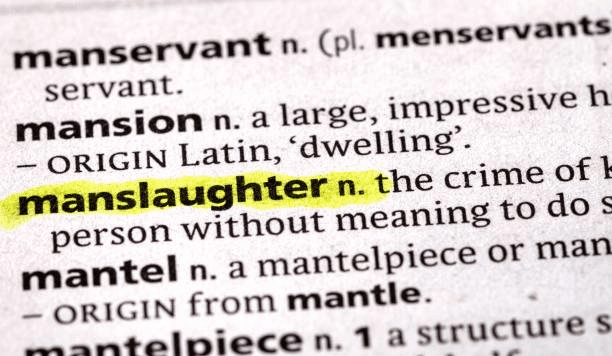Content warning: This article contains explicit content. We advise reader discretion.
What is involuntary manslaughter? Section 18 of the Crimes Act 1900 considers manslaughter as “every other punishable homicide” that is not murder.
In New South Wales (NSW), there are two kinds of manslaughter: voluntary manslaughter and involuntary manslaughter. Voluntary manslaughter happens when a killing occurred, but the culpability (responsibility of a fault or wrong) of the offender’s conduct is reduced by reason of excessive self-defence, provocation, or substantial impairment by abnormality of mind.
On the other hand, involuntary manslaughter occurs through an unlawful and dangerous act or criminal negligence. This article deals with the topic of involuntary manslaughter in NSW under the Crimes Act 1900.
Involuntary Manslaughter
The criminal offence of involuntary manslaughter contains the physical element (actus reus) of murder. However, the offence lacks the mental element (mens rea) of murder, which means that there was no intent to kill or inflict grievous bodily harm (GBH) to another.
As mentioned earlier, involuntary manslaughter can be further classified into two:
- Manslaughter by Unlawful and Dangerous Act, and
- Manslaughter by Criminal Negligence
Manslaughter by Unlawful and Dangerous Act
Manslaughter by unlawful and dangerous act involves no intention to kill another person. However, the unlawful and dangerous act that results in the death of another must be a wilful act carried out by a person voluntarily. In addition, the accused must have known that the “unlawful or dangerous act” would result in significant damage to another person.
For the court to find a party guilty of this form of involuntary manslaughter, the prosecution must prove beyond reasonable doubt that:
- A person was killed,
- The death was caused by an act of the defendant,
- The defendant intended to commit the act that caused the death, and
- The act was unlawful and dangerous.
In Wilson v The Queen (1992) 174 CLR 313, the Court ruled that the “dangerous and unlawful act” must be one that a reasonable person in the position of the defendant would have appreciated as exposing another or others to such a high risk of serious injury.
Manslaughter by Criminal Negligence
Manslaughter by criminal negligence also involves no intention to kill. This form of involuntary manslaughter consists of a conscious act on the part of the offender which entails reckless disregard of the standard of care and high risk of injury, such that the act merited criminal punishment.
To establish the offence of manslaughter by criminal negligence, the prosecution must prove beyond reasonable doubt that:
- The defendant owed a legal duty of care to the victim,
- The defendant committed an act or omitted to do an act,
- The act or omission substantially caused or accelerated the death of the victim,
- The act or omission breached the duty of care owed to the victim, and
- The act or omission amounted to criminal negligence and deserved criminal punishment because:
- it fell short of the standard of care which a reasonable person would have exercised in the circumstances, and
- it involved such a high risk that death or serious bodily harm would follow as a result of it.
In Lavender v The Queen (2005) 222 CLR 67, the Court ruled that the degree of negligence must be at least as high as recklessness.
When Does a “Duty of Care” Exist?
A duty of care arises in the following situations where:
- a dependent familial relationship exists,
- the accused created a dangerous situation,
- there was a contractual relationship,
- there was a voluntary assumption of a duty, or
- the law imposes a duty of care.
Australian courts found persons guilty of manslaughter by criminal negligence in the following situations:
- A man willfully failing to provide his elderly mother, for whom he was primary carer, with proper nutrition, hydration, medication and medical care [R v George (2004) NSWCCA 247].
- Where the defendant assumed a duty of care towards a helpless person but secluded them which prevented others from rendering assistance [Taktak (1988) 14 NSWLR 226].
Penalties for Manslaughter
Under Section 24 of the Crimes Act 1900, manslaughter carries a maximum penalty of 25 years’ imprisonment. However, Courts can impose lesser punishments depending on the facts and circumstances of each case.
Defences for Involuntary Manslaughter
Parties can raise a number of defences to defeat a charge of involuntary manslaughter. These include:
- Establishing that the defendant’s act or omission was not the substantial cause of the death,
- Proving that the defendant’s actions were not unlawful and dangerous (for manslaughter by unlawful and dangerous act),
- Showing that the defendant did not owe a duty of care to the victim, or did not substantially fall short of their standard of care (for manslaughter by criminal negligence), and
- Complete defences, such as self-defence, duress, and necessity.
If the defendant successfully raises any of the defences, the burden of proof shifts to the prosecution, which would then be required to establish beyond reasonable doubt that the defence raised does not apply. If the prosecution fails to fulfil that requirement, the court must find the defendant not guilty for manslaughter.
Manslaughter versus Murder
There are certain similarities between the offences of manslaughter and murder. Both murder and manslaughter involve the unlawful killing of another human being.
However, while manslaughter constitutes an offence of homicide, it is a less serious offence than murder because the accused does not act with the intention of killing the deceased.
Unlike the offence of murder, manslaughter does not require the prosecution to prove reckless indifference to life or an intention to kill or cause grievous bodily harm.
Intent holds the key distinction between murder and manslaughter. If there exists an intention to commit murder (or grievous bodily harm), the accused will be charged with murder. Where the killing was unintentional, the accused will be charged with manslaughter.
As to penalties, the maximum that can be imposed for murder is life imprisonment; for manslaughter, as mentioned earlier, 25 years’ imprisonment.

Seeking Legal Advice
Manslaughter, whether voluntary or involuntary, is a serious offence. If you are charged with the offence, it is highly advisable to seek legal advice.
JB Solicitors has a leading team of experienced lawyers in Criminal Law that can help with your specific case. We offer legal services such as legal representation and legal advice. We ensure that our clients’ legal concerns are resolved.
Do you have any more queries? Contact us today.
